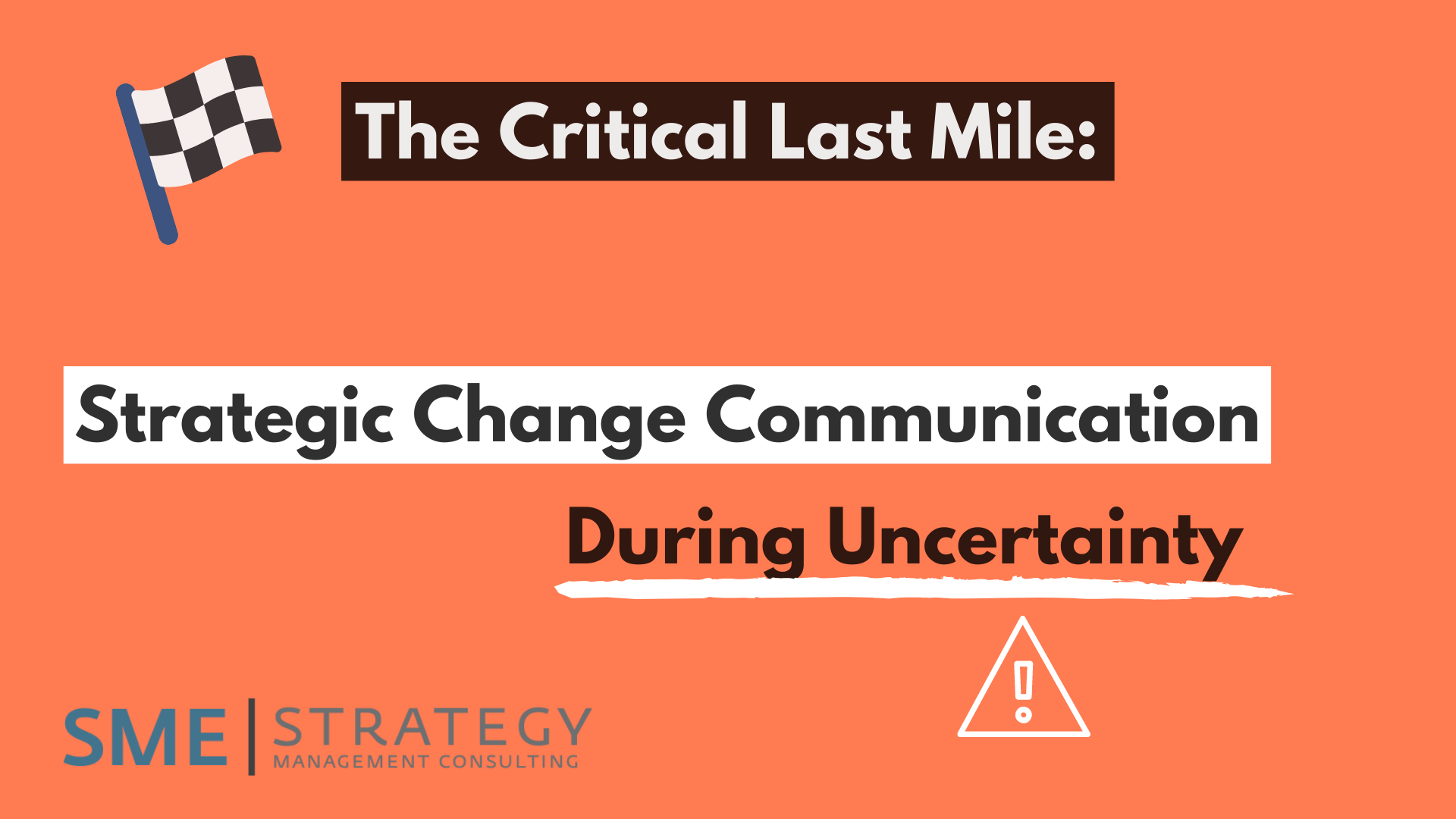The Critical Last Mile: Strategic Change Communication During Uncertainty

Strategic change is a challenge for any organization, especially with the speed of today’s business and the new level of uncertainty. But driving true strategic and organizational change is more of a marathon than a sprint. You need to create a strategy, prepare, and execute – but it’s all for nothing if you don’t finish the race, including that last critical mile. For strategic change, that last mile is usually communication: without effective change communication, all that work will be wasted.
Communication Hurdles for Change Initiatives
Traditionally, communication has been just the delivery of information, but driving change and really getting through to your employees requires so much more than that. Companies often have multiple change initiatives happening at any given time. On top of that, the COVID-19 pandemic has triggered unexpected business changes and rapid digital transformation. We are currently entering a phase of uncertainty as many companies ponder their return-to-work plan, including the adjustments they will need to make to their office environment and workplace procedures. Additionally, leaders are considering how to address important social issues in their community and within their organizations.
Is your strategy session soon? Here are 15 questions to ask your team first:
No matter your change initiative, you’ll need to avoid these common communication pitfalls:
One-size-fits-all communication lacks effectiveness for connecting with your diverse employees who have different backgrounds, mindsets, and roles.
The overwhelming “noise” from your employees’ received messages may be preventing your strategic communications from getting through to them: according to a recent IDC survey, employees receive 50 business emails per day on average, and they perceive 40% of the messages in their inboxes as unimportant.
Confusion over the messaging’s takeaways can accidentally conceal the next steps you need employees to take.
Stress and anxiety over changes understandably affects some employees. To become fully aligned, accepting something outside of their comfort zone may require adjustments to their behavior and thought process.
> Watch below: Leading Change in 5 Slides
5 Components of Strategic Change Communications
In order to truly transform your business, you need to earn employee buy-in through change communications. These key features should be included in your initiatives:
- Strategic Goals
As part of shaping your goals, first identify the strategic purpose and objectives of your communications. You will also want to think about how your strategic goals tie back to your different employee groups. For example, one goal for your return-to-work plan could be having 100% of your employees review your updated procedures by the end of the month. The procedures may differ depending on location, department, or role. Watch our video on how to develop your own SMART goals here.
- Targeted Content
Whether it’s email, video calls, or Slack notifications, your employees receive an overwhelming amount of communications each day. Creating more personalized messages aimed toward different micro-cultures can help cut through that clutter while being meaningful to your audiences. You can help your initiative better resonate with a specific group by taking their needs and understanding into account when customizing your communications for them.
- Communication Experience
No single message will drive the sustainable change that your organization needs. Instead, build momentum and connection by guiding employees on a communication journey, combining campaigns and content experiences. You can create a larger story or series through videos, infographics, and other smaller pieces of content, which are promoted to employees via reach campaigns. Learn more about communication strategy.
- Call to Action
Most message senders assume that delivery equals communication success. In reality, the most successful communications inspire the recipient to take appropriate action and should be reinforced over a set period of time. Clearly define what you expect employees to do based on your message, such as completing a feedback survey by the end of the week. This will help them prioritize their response to your message.
- Data
The only way to meaningfully connect with diverse employees and know what’s working is through data. Measuring sentiment, goal alignment, actions taken, and new behavior adoption will be critical as you continue navigating this next phase. It’s easy to feel overwhelmed by data, so start small by measuring the response toward a single message or short series before analyzing the results for different audience groups. Then, as you get your communication journey going, take the time for extensive data exploration and start looking for the relationships between drivers and desired outcomes. Use that data analysis to iterate on your communications for your current campaign and related ones in the future.
Creating your own strategic plan? Make sure your team is aligned with that plan by taking our course, which will guide you through each step of the process:
The Critical Last Mile
Communication is key to helping your employees persevere through professional and personal challenges as everyone adapts to this “new normal” and your strategic change initiatives. Your executive team may have tweaked priorities to adjust to the current business landscape. Your role is to communicate in order to reach your business goals, ensuring the sustainability of these changes through continuous adoption, alignment, and action.
When it comes to change, it is easy to feel discouraged by the potential bumps along the way. However, as leaders, we need to help our team stay on course with a business strategy that embraces communication as the critical last mile before crossing the finish line.
To learn more about our guest author's company, GuideSpark (& their products), click here.




